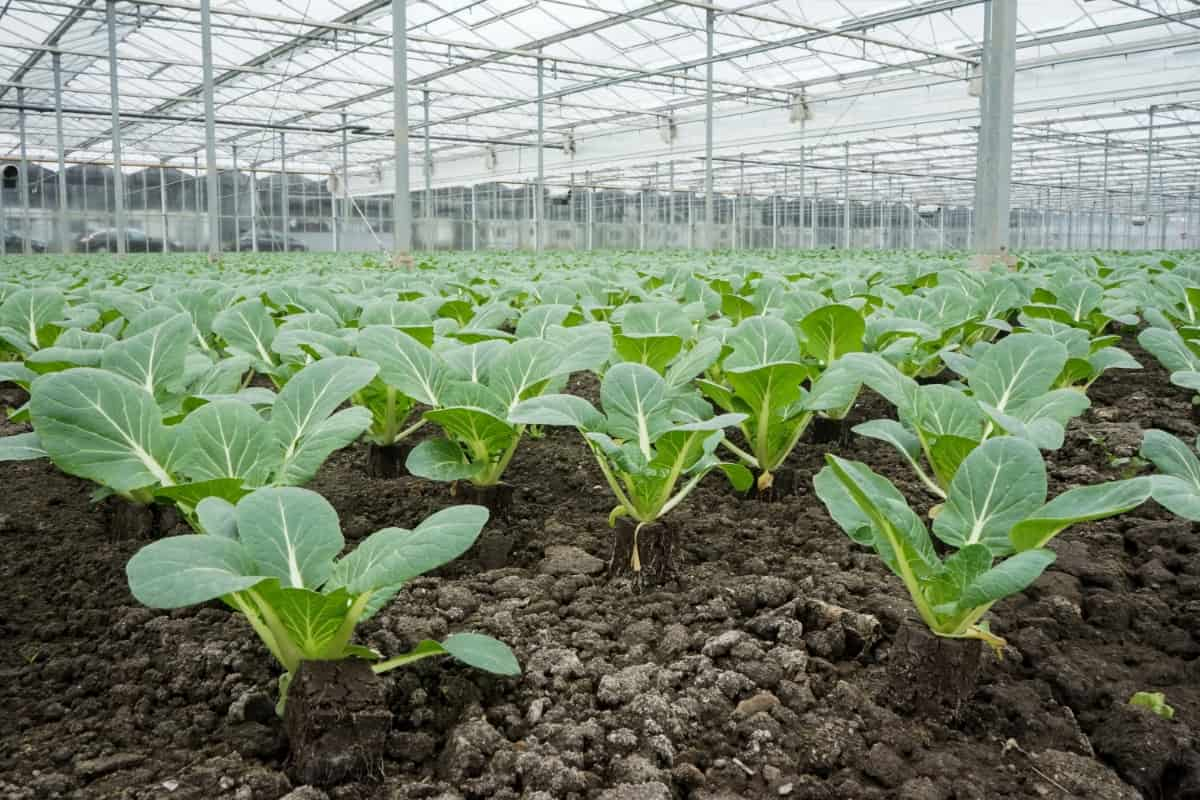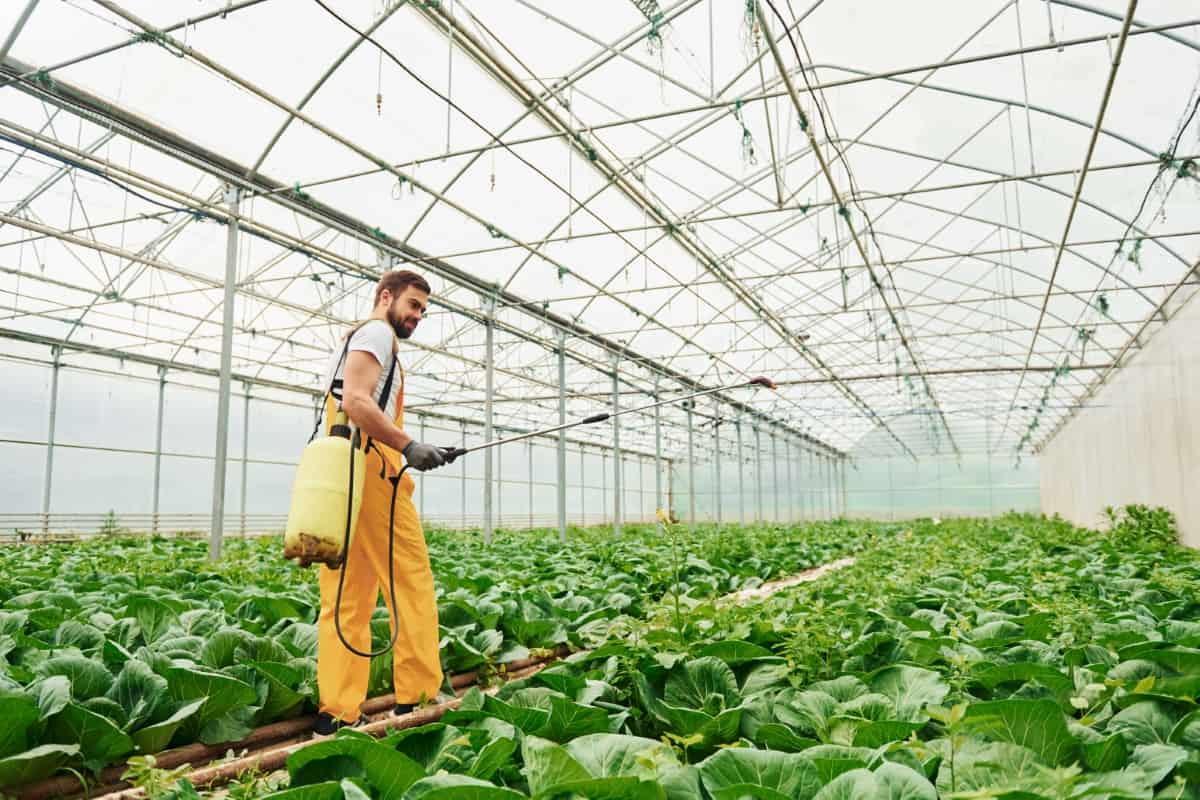Cabbage farming in greenhouses is becoming increasingly popular among growers due to the numerous benefits it offers. Greenhouses provide a controlled environment for Cabbage cultivation, allowing farmers to overcome challenges posed by unpredictable weather conditions and pests. By growing Cabbage in greenhouses, farmers can extend their growing season and produce high-quality crops year-round.

Cabbage Farming in Greenhouse
Choosing the Right Cabbage Varieties for Greenhouse Farming
Choosing the right Cabbage varieties for greenhouse farming is crucial for a successful harvest. First and foremost, consider your specific growing conditions in the greenhouse. Factors such as temperature, humidity levels, and light intensity will play a significant role in determining which Cabbage varieties are best suited for your setup. Next, think about the market demand and consumer preferences in your area. Furthermore, consider the time it takes for each variety to mature.
Some Cabbages may have a shorter growing period, while others may take longer. This information is crucial when planning out your planting schedule and ensuring a continuous supply throughout the year. Additionally, consider disease resistance when selecting Cabbage varieties for greenhouse farming. Certain cultivars might be more resistant to common pests and diseases prevalent in greenhouses, reducing the need for chemical interventions.
Optimal Conditions for Growing Cabbage in Greenhouses
Temperature: Ideally, the daytime temperature should range between 15-21°C, while nighttime temperatures should be slightly cooler at around 10-13°C. This temperature range ensures healthy growth and prevents stress on the plants.
Lighting: Adequate lighting is vital for Cabbage plants as they require at least six hours of direct sunlight each day.
Humidity: Cabbage plants prefer moderate humidity levels ranging from 40% to 80%. High humidity can promote disease development, so proper air circulation within the greenhouse is important to maintain optimal moisture levels.
Ventilation: Good airflow is essential in preventing disease and ensuring healthy plant growth. Ventilation systems such as fans or vents should be utilized to create an ideal airflow pattern throughout the greenhouse.
Soil pH and Composition: Cabbages thrive in well-drained soil with a slightly acidic pH level between 6.0 and 6.8. Regular soil testing will help determine if any amendments are necessary to optimize nutrient availability.
Watering: Consistent watering practices are crucial for Cabbage cultivation in greenhouses. The goal is to keep the soil moist but not waterlogged.
Preparing the Greenhouse for Cabbage Cultivation
Ensure that your greenhouse is clean and free from any debris or weeds. It’s also a good idea to disinfect the entire structure with a mild bleach solution to further reduce the risk of contamination. Next, consider installing shade cloth or blinds on your greenhouse windows. Cabbage plants prefer cooler temperatures, so shading can help regulate the temperature inside and prevent overheating during hot summer days.
In case you missed it: How to Protect Cabbage from Slugs and Snails: Natural and Organic Control

Proper ventilation is crucial for successful Cabbage cultivation. Make sure you have sufficient vents or fans installed in your greenhouse to promote air circulation and prevent humidity buildup, which can cause fungal diseases. In addition, consider using raised beds or containers for planting Cabbage in order to improve drainage and prevent waterlogged soil conditions. Cabbage plants thrive in well-draining soil with plenty of organic matter, so amending the soil with compost or aged manure can greatly benefit their growth.
Planting and Transplanting Cabbage Seedlings in Greenhouses
Cabbage farming in greenhouses offers farmers the opportunity to have greater control over the growing conditions and optimize yields. Before planting, you should prepare the soil or growing medium in your greenhouse. Ensure that it is well-drained and enriched with organic matter. This will provide a fertile environment for your Cabbage plants to thrive.
When choosing Cabbage seedlings for transplantation, opt for healthy, disease-free specimens. Transplanting can be done carefully to avoid damaging the delicate roots of the seedlings. Dig holes and gently place them inside. Firmly press down on the surrounding soil to ensure good contact between roots and soil. After transplanting, water your Cabbage seedlings thoroughly, but avoid overwatering as this can cause rotting or fungal diseases. Monitor their growth regularly and provide necessary support, such as stakes, if needed.
Irrigation and Water Management in Cabbage Greenhouse Farming
In a controlled environment like a greenhouse, it’s important to monitor and adjust watering practices based on the specific needs of your Cabbage plants. One effective method of irrigation in greenhouse Cabbage farming is drip irrigation. This system delivers water directly to each plant, minimizing waste and ensuring that moisture reaches the roots where it’s needed most. Aim for consistent but not excessive soil moisture throughout the growing season.
Proper drainage is another key aspect of water management in greenhouses. Ensure that your greenhouse has adequate drainage systems in place to prevent waterlogging and excess moisture buildup. Mulching around Cabbage plants can help retain soil moisture by reducing evaporation from the surface. Organic mulches like straw or shredded leaves are ideal options. Remember that different stages of Cabbage growth may require varying amounts of water. Young seedlings need more frequent watering compared to mature plants with well-established root systems.
Nutrient Management and Fertilization for Cabbage in Greenhouses
Nutrient management and fertilization are crucial aspects of Cabbage farming in greenhouses. To begin with, soil testing plays a vital role in determining the nutrient requirements of Cabbage plants. Timing is also important when it comes to fertilizing Cabbage in greenhouses. It is best to split your fertilizer applications into multiple stages throughout the growing season rather than applying them all at once.
In case you missed it: Top 10 Best Cabbage Varieties to Choose for Your Farm

In addition to proper timing, it’s crucial to apply fertilizers accurately and evenly across your greenhouse bed. Regular monitoring of plant health through visual inspection can also guide you in adjusting your nutrient management practices if needed.
Pest and Disease Management in Greenhouse Cabbage Farming
By implementing effective strategies, farmers can minimize the risk of infestation and ensure healthy crop growth. One way to prevent pests from infiltrating your greenhouse is by practicing good sanitation. Regularly clean the greenhouse to remove any debris or plant residues that may harbor pests or diseases. This will help create an unfavorable environment for their survival.
Monitoring is another key component of pest management. Regularly inspect your Cabbage plants for signs of damage, such as chewed leaves or wilting plants. By identifying problems early on, you can take immediate action to mitigate their impact. Implementing biological controls is also highly recommended in greenhouse Cabbage farming.
Start with using disease-resistant Cabbage varieties when possible. Additionally, rotate crops regularly to disrupt disease cycles and reduce pathogen buildup in the soil. Proper watering techniques are essential to avoid creating favorable conditions for certain diseases like powdery mildew or downy mildew. Water at the base of plants rather than overhead irrigation methods, as wet foliage promotes fungal growth.
Harvesting and Post-Harvest Handling of Cabbage Grown in Greenhouses
To harvest Cabbages, use a sharp knife or shears to cut the heads from the base of the plant. It’s important not to pull or twist the heads as this can damage them. Once harvested, carefully transport the Cabbages to a shaded area where they can be sorted and prepared for storage or sale. When handling Cabbage after harvest, it’s essential to minimize bruising and damage as much as possible.
In case you missed it: Cabbage Seed Starting: Best Practices for Germination and Cabbage Transplanting

Conclusion
Cabbage farming in greenhouses offers numerous advantages and opportunities for growers. By creating a controlled environment, farmers can optimize growing conditions and produce high-quality Cabbages throughout the year. With the right choice of cabbage varieties, proper preparation of the greenhouse, efficient irrigation and nutrient management techniques, and effective pest and disease control measures, farmers can ensure a successful harvest.
With careful planning and implementation of appropriate practices, Cabbage farming in greenhouses can be highly profitable while promoting sustainable agriculture. It provides an avenue for small-scale farmers to enter commercial vegetable production and meets the ever-increasing demand for fresh vegetables throughout the year.
- Feed Your Flock for Less: Top 10 Tips to Save on Chicken Feed
- Ultimate Guide to Ossabaw Island Hog: Breeding, Raising, Diet, and Care
- Hatching Answers: The Top 10 Reasons Your Chickens Aren’t Laying Eggs
- Eggs and Economics: Breaking Down the Cost of Raising Backyard Chickens
- Defend Your Greens: Proven Methods to Keep Iguanas Out of Your Garden
- Ultimate Guide to Cinnamon Queen Chicken: A Comprehensive Guide for Beginners
- Ultimate Guide to California Tan Chicken: Breeding, Raising, Diet, Egg-Production and Care
- Ultimate Guide to Marsh Daisy Chicken: Breeding, Raising, Diet, and Care
- 10 Types of Chicken Farming Businesses You Can Start for Profits